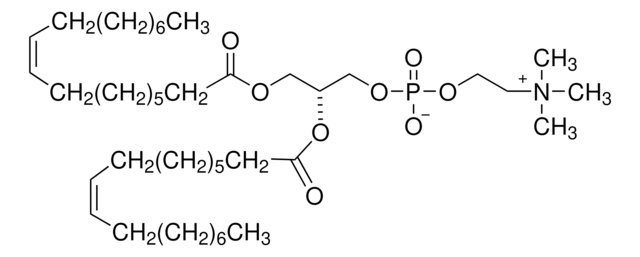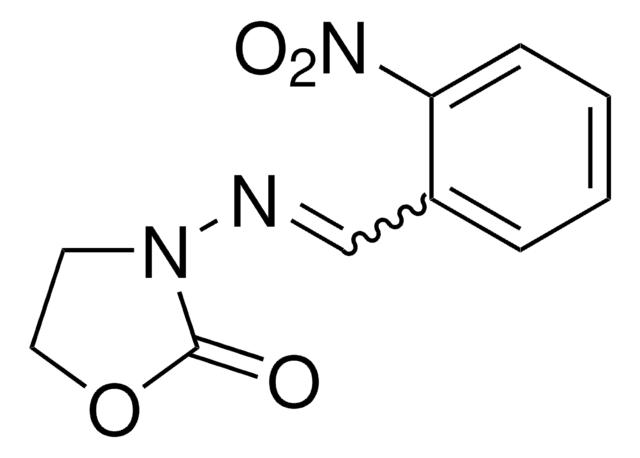Wichtige Dokumente
42490
1,2-Dioleoyl-sn-glycero-3-phosphoethanolamin
≥99.0% (10 mg phospholipid per ml CHCl3, TLC)
Synonym(e):
(9Z)-9-Octadecensäure-(1R)-1-[[[(2-aminoethoxy)-hydroxyphosphinyl]-oxy]-methyl]-1,2-ethandiylester, 1,2-Di-(9Z-octadecenoyl)-sn-glycero-3-phosphoethanolamin, 3-sn-Phosphatidylethanolamin, 1,2-dioleoyl, L-β,γ-Dioleoyl-α-cephalin, DOPE, Dioleoylphosphatidylethanolamin, PE(18:1(9Z)/18:1(9Z))
About This Item
Empfohlene Produkte
Assay
≥99.0% (10 mg phospholipid per ml CHCl3, TLC)
Form
liquid
Funktionelle Gruppe
phospholipid
Lipid-Typ
phosphoglycerides
Lagertemp.
−20°C
SMILES String
CCCCCCCC\C=C/CCCCCCCC(=O)OCC(COP(O)(=O)OCCN)OC(=O)CCCCCCC\C=C/CCCCCCCC
InChI
1S/C41H78NO8P/c1-3-5-7-9-11-13-15-17-19-21-23-25-27-29-31-33-40(43)47-37-39(38-49-51(45,46)48-36-35-42)50-41(44)34-32-30-28-26-24-22-20-18-16-14-12-10-8-6-4-2/h17-20,39H,3-16,21-38,42H2,1-2H3,(H,45,46)/b19-17-,20-18-
InChIKey
MWRBNPKJOOWZPW-CLFAGFIQSA-N
Suchen Sie nach ähnlichen Produkten? Aufrufen Leitfaden zum Produktvergleich
Anwendung
Signalwort
Danger
Gefahreneinstufungen
Acute Tox. 3 Inhalation - Acute Tox. 4 Oral - Aquatic Chronic 3 - Carc. 2 - Eye Irrit. 2 - Repr. 2 - Skin Irrit. 2 - STOT RE 1 - STOT SE 3
Zielorgane
Central nervous system, Liver,Kidney
Lagerklassenschlüssel
6.1C - Combustible acute toxic Cat.3 / toxic compounds or compounds which causing chronic effects
WGK
WGK 3
Flammpunkt (°F)
Not applicable
Flammpunkt (°C)
Not applicable
Persönliche Schutzausrüstung
Eyeshields, Faceshields, Gloves
Hier finden Sie alle aktuellen Versionen:
Besitzen Sie dieses Produkt bereits?
In der Dokumentenbibliothek finden Sie die Dokumentation zu den Produkten, die Sie kürzlich erworben haben.
Kunden haben sich ebenfalls angesehen
Unser Team von Wissenschaftlern verfügt über Erfahrung in allen Forschungsbereichen einschließlich Life Science, Materialwissenschaften, chemischer Synthese, Chromatographie, Analytik und vielen mehr..
Setzen Sie sich mit dem technischen Dienst in Verbindung.














